|   |
The Alliance for Historic Landscape Preservation: Conserving Cultural Landscapes met for its 2019 Annual Conference in Detroit, Michigan from 23-25 May 2019. The theme of the conference was "Detroit as a Cultural Landscape Palimpsest." Under the stellar management of Brenda Williams and her local people at Quinn Evans, we immersed ourselves in a wide range of cultural landscapes to understand the city's – and the region's – rich history.
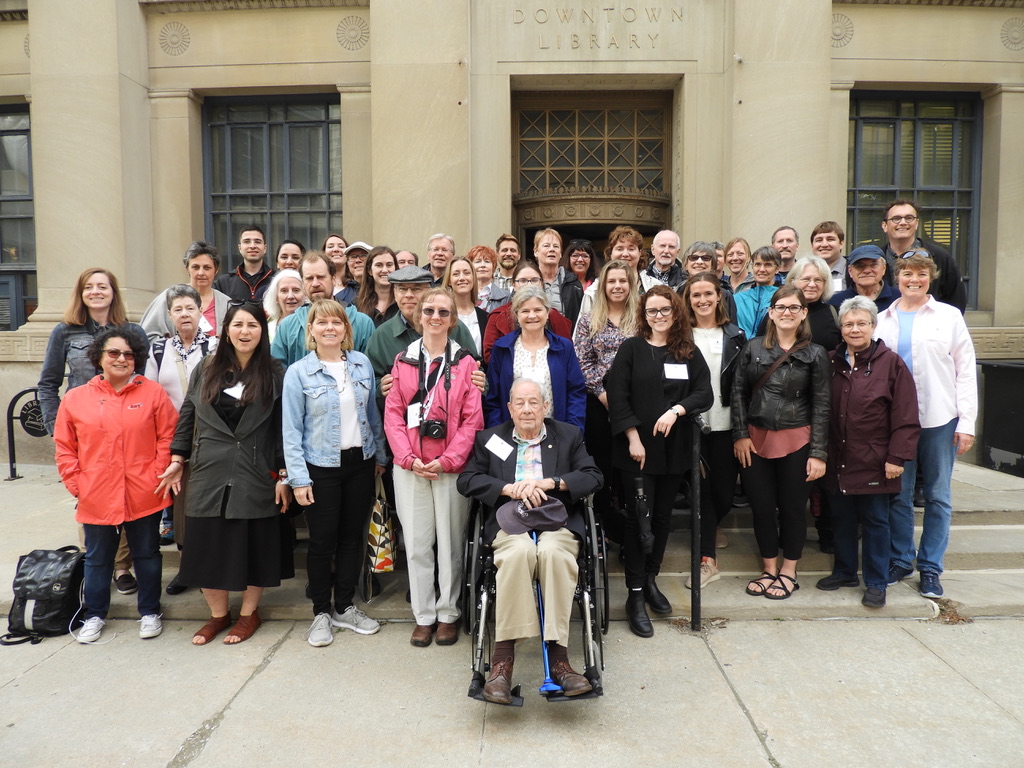
In front of Detroit Public Library
The conference was promoted as a means to see firsthand how Motown is addressing dramatic demographic and economic change through innovative approaches – while embracing, celebrating and preserving cultural heritage – towards a positive, more 'resilient' future. We were not disappointed.
Our meetings were held at the campus of Wayne State University in Midtown, in the McGregor Memorial Conference Center designed by the architect Minoru Yamasaki. It was conveniently located near our accommodations, The Inn on Ferry Street.
Wednesday started with an update to the Tucson Strategic Planning exercise on the 26th floor of the Fisher Building. The Board meeting followed that afternoon.
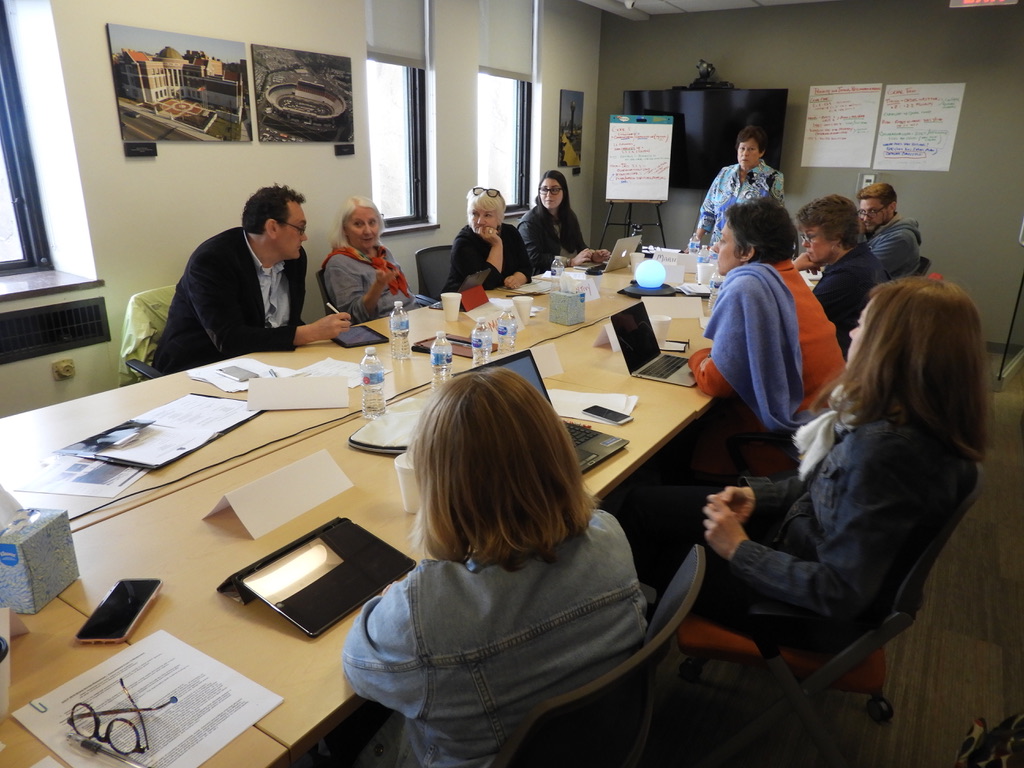
Strategic planning
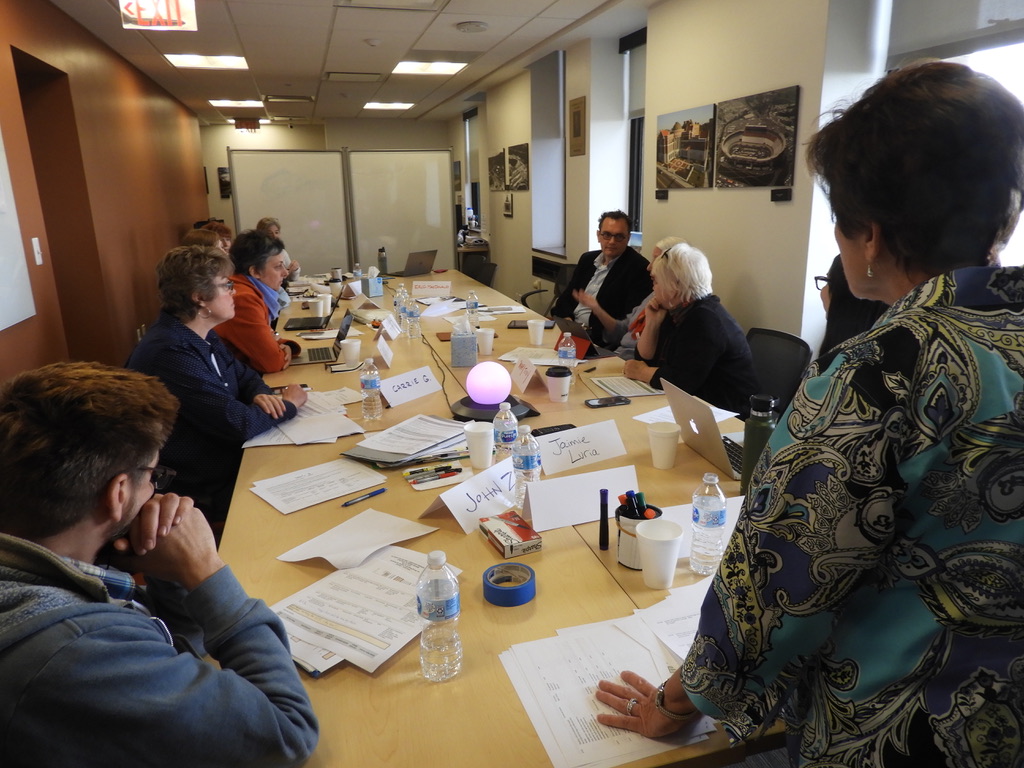
Marilyn Opdyke at the helm
Once business was complete, it was time to journey to the highlight of the evening at the Charles H. Wright Museum of African American History organized by Mary Tivy. Here we renewed valued relationships and met new members at the kick-off reception, with the requisite 'round table.' We also had the opportunity to tour the museum's exhibits.

The dome at the Centre
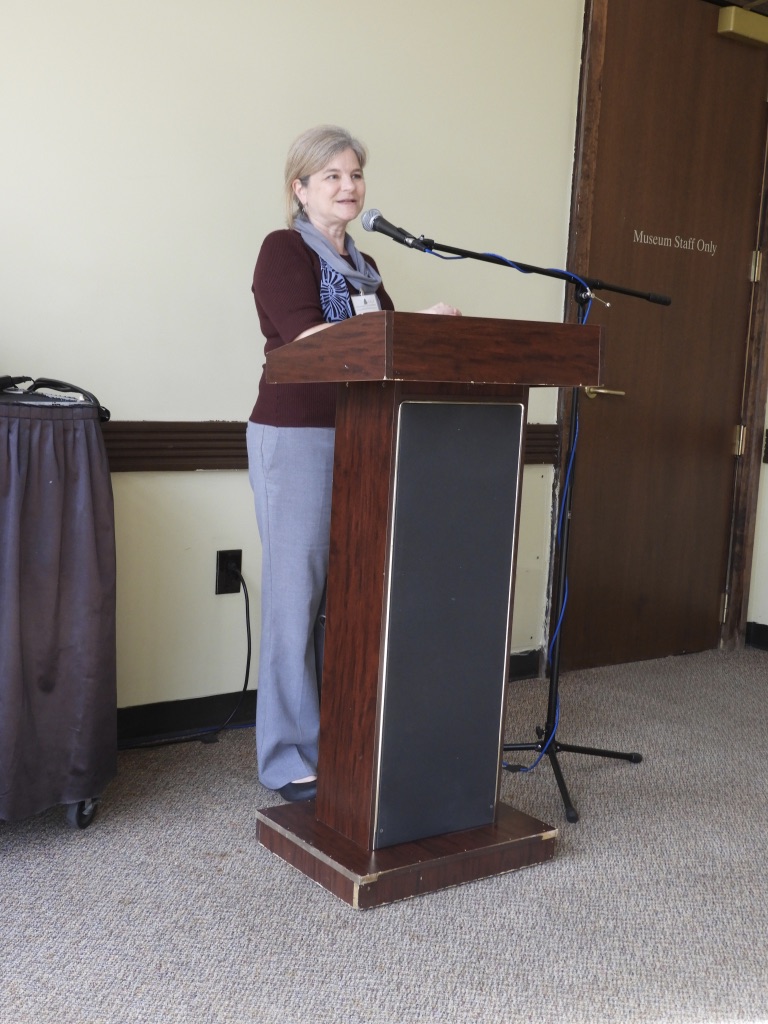
Our fearless President Brenda

Celebrating Hugh's birthday

Hugh Miller and Mary Tivy
We also took advantage of the moment to acknowledge the impending 90th birthday of Hugh Miller. We highlighted his long tenure with the AHLP and specifically focused on the themes of 'collegiality' and 'lifelong learning.'
The first full day of the conference began with a warm welcome from AHLP President, Brenda Williams. This was followed with a local welcome from her cohort at Quinn Evans, Ruth Mills, who provided insight related to the importance of the McGregor Memorial Conference Centre, now a National Historic Landmark.
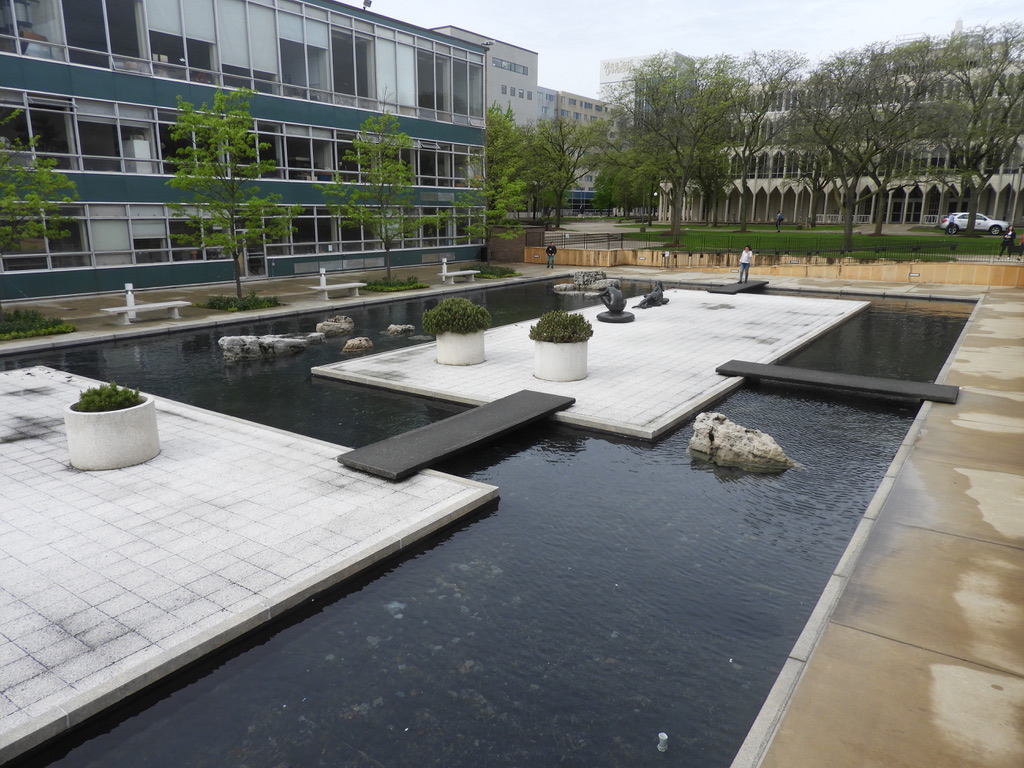
The pool
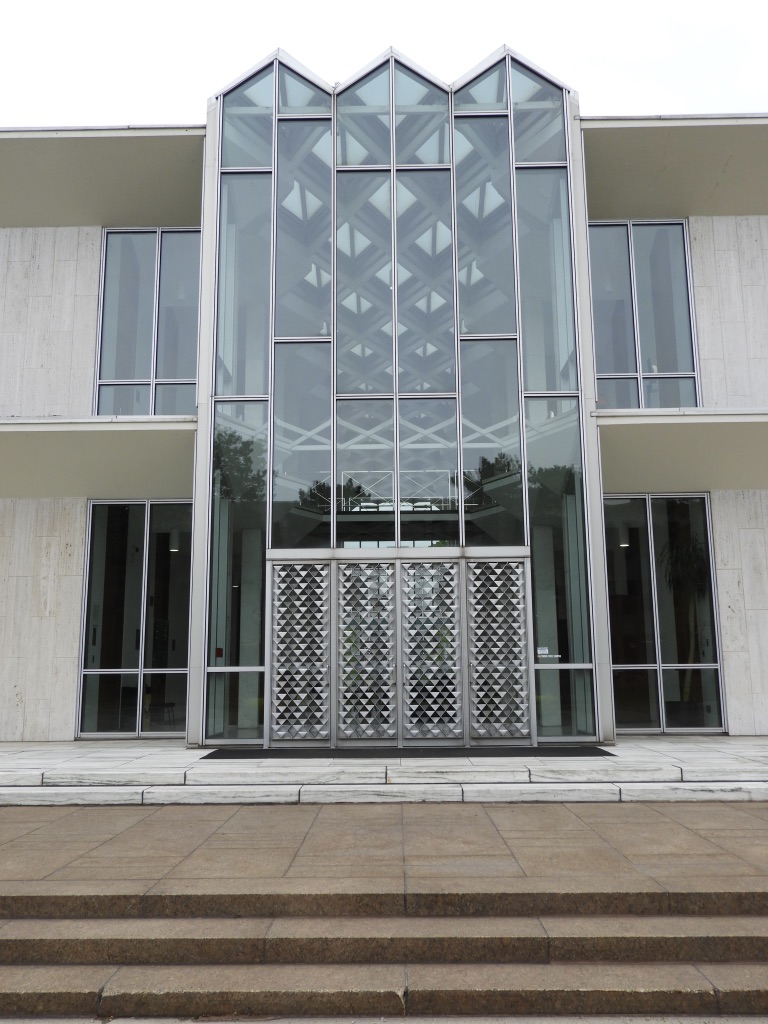
The grand entrance

Class in session

Attentive attendees
Importantly, to establish the geopolitical 'baseline' for our conference, Paul Sewick kicked off the Detroit-centric learning session with his presentation entitled "The Inception of Detroit's Grid." Paul spoke of: 18th c. ribbon farms; the (inevitable) arrival of the federal government (read 'army'); and the establishment of Fort Detroit in 1796. He then told us of the plan for Detroit initiated by Augustus B. Woodward, a unified system of diagonal streets and grand public circles laid out in a symmetrical pattern, which continues to impact the organizational system of the city today. His well-researched blog is worth a peek: detroiturbanism.
Following Paul’s insightful presentation, the roster of papers commenced.
AHLP Abstracts 2019
The first morning concluded with a presentation by the Superintendent of the River Raisin National Battlefield Park, the southern defense point of the post of Detroit. Superintendent Scott Bentley took us on journey beginning in the early 17th c. (and the Iroquoian Wars) to the establishment of New France (in 1671) and its implications on what is now the Detroit area.
The landscape's abundant natural resources and strategic location proved vital to the eighteenth century fur trade economy and to subsequent European settlement. Fort Detroit became a contested territory between French, British and American armies and their Indigenous allies. Vestiges of war, removal, settlement, and development remain in the landscape (sometimes obvious, sometimes less so).
The afternoon 'outdoor program' took us to the south end of the city and Historic Fort Wayne where Tom Berlucchi (Chairman, Historic Fort Wayne Coalition) and Jim Conway (Manager Historic Fort Wayne, City of Detroit) led us on a fascinating ramble through this amazing complex.
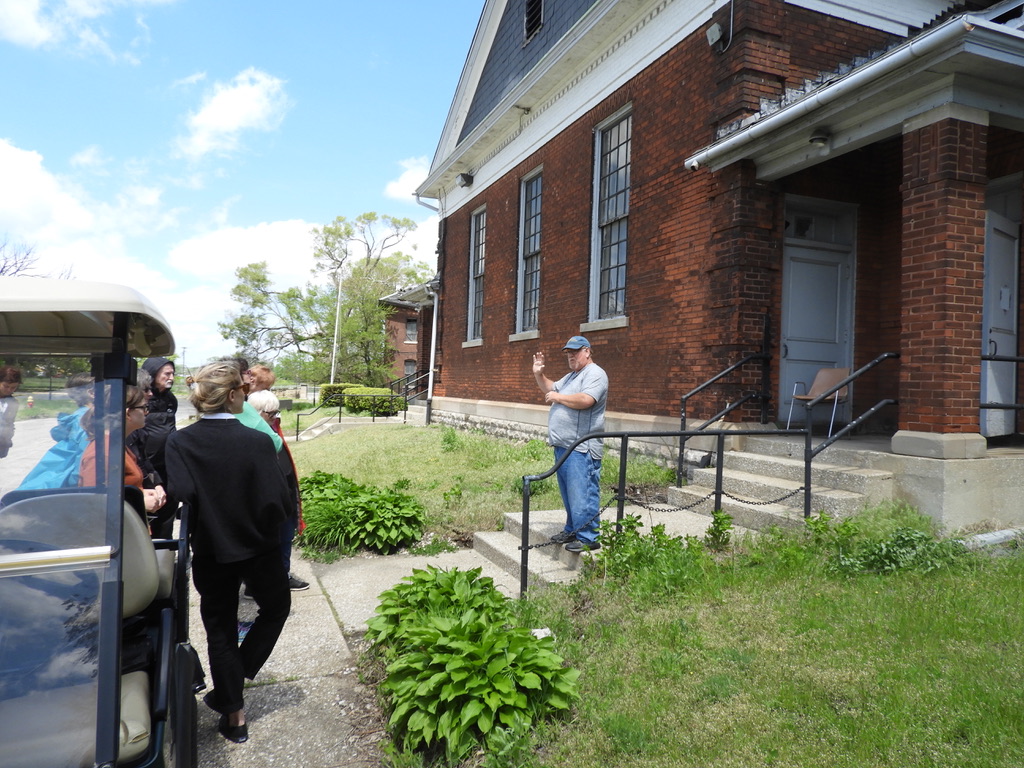
Tom Berlucchi
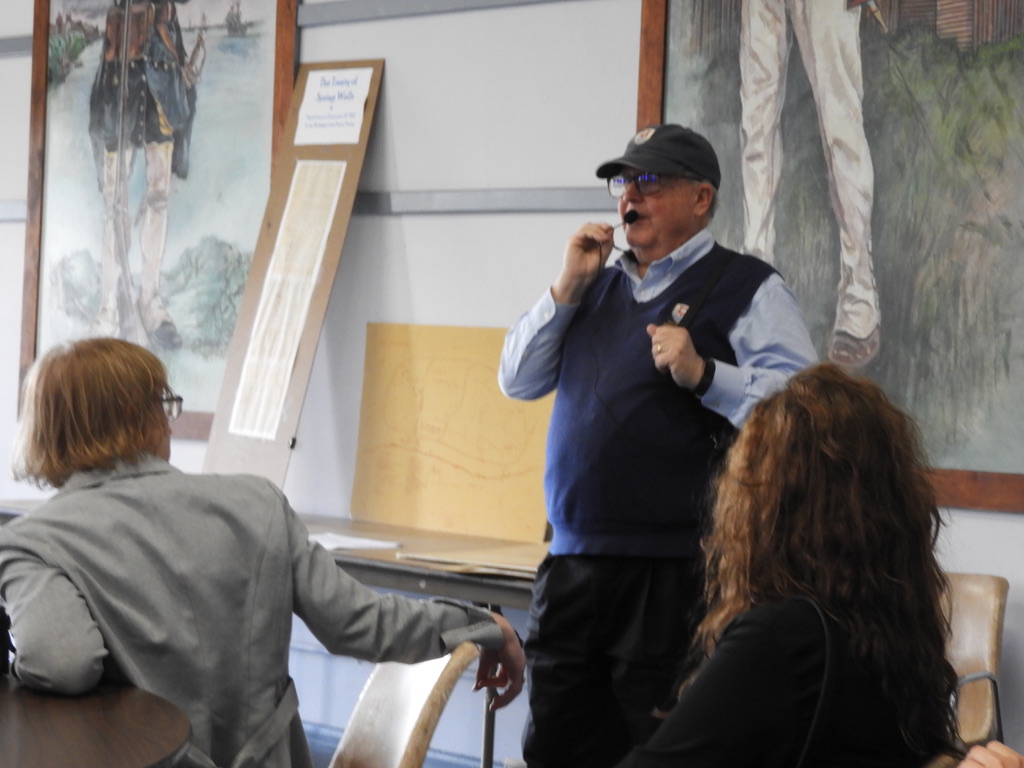
Jim Conway

Carrie, Lori and Hugh
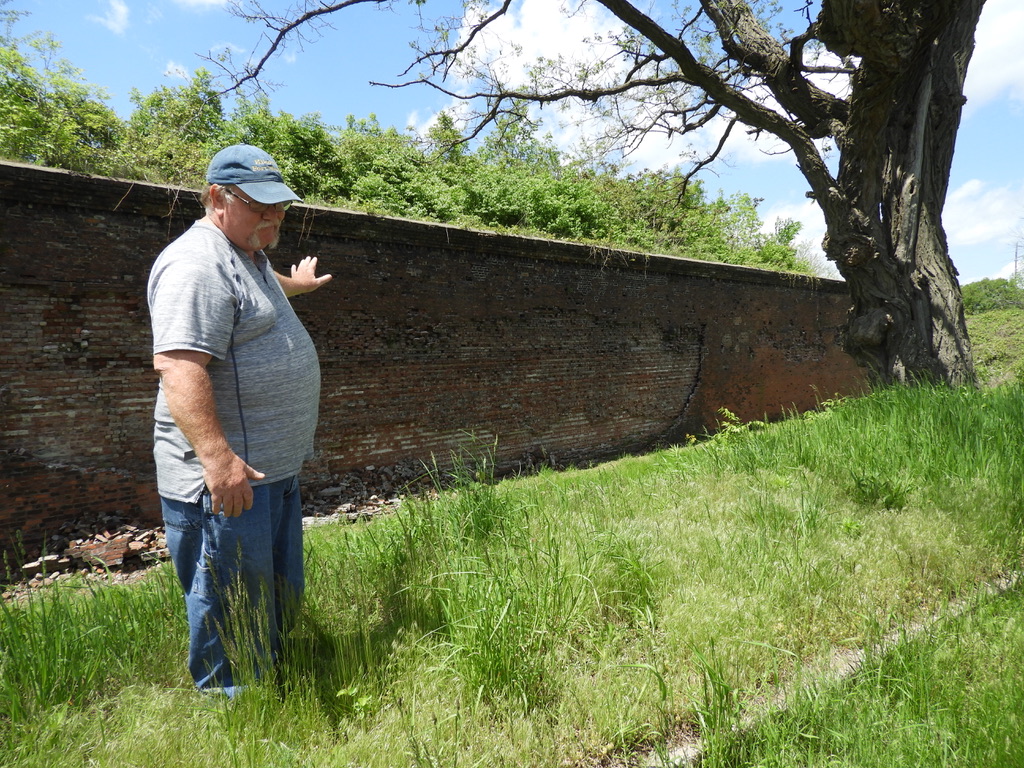
Tom at the wall

About to ramble
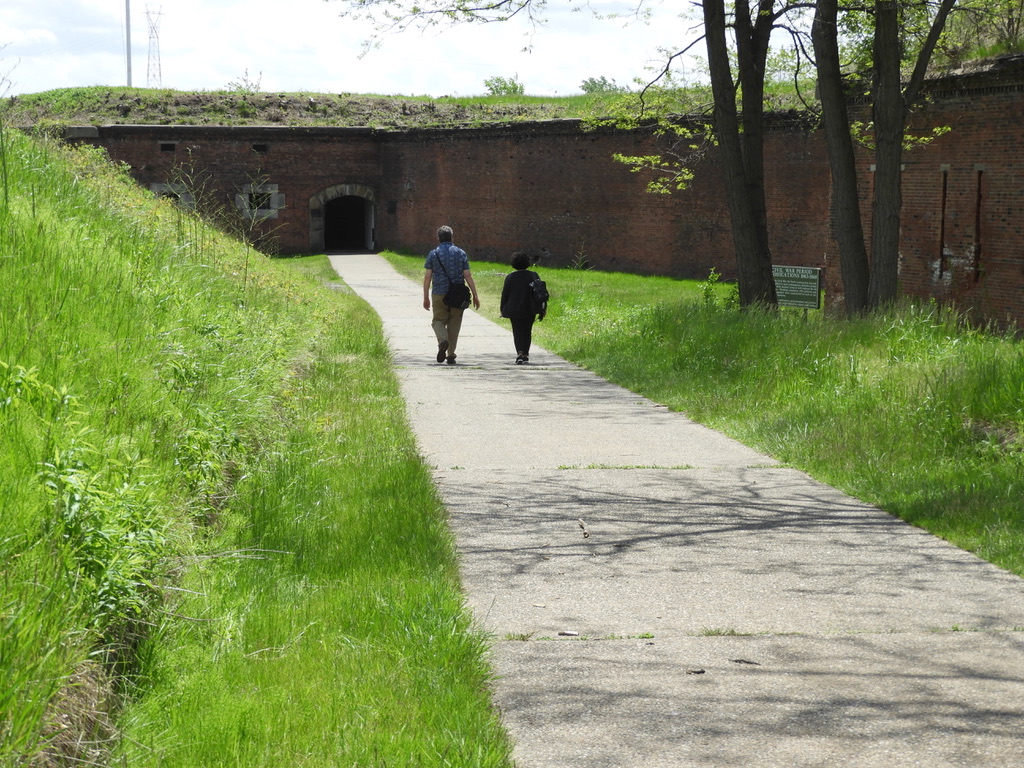
To the gate

The interior
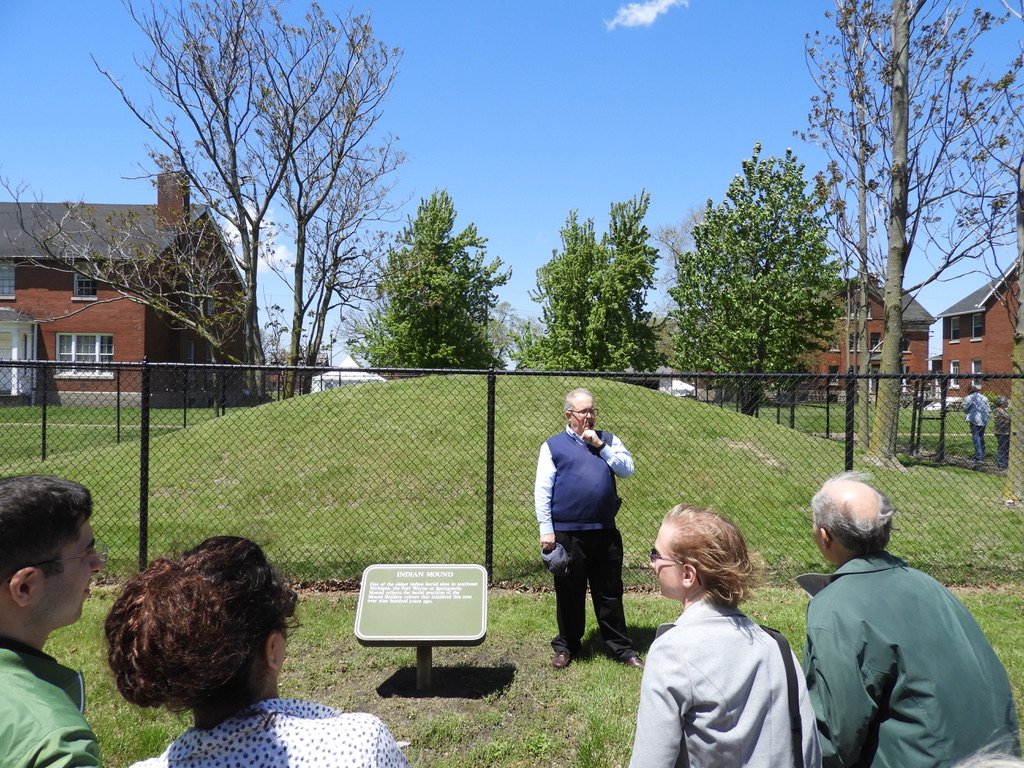
Jim at the mound
Following that, we met Grand Chief Ted Roll of the Wyandotte of Anderdon Nation and Joshua Garcia, Wyandotte Nation Youth-Intern Ambassador (Oklahoma) who introduced us to the land of the Anishinabeg (First People). They represented the voices of Indigenous communities directly associated with area.

At The Wyandots – A Family Tribute memorial
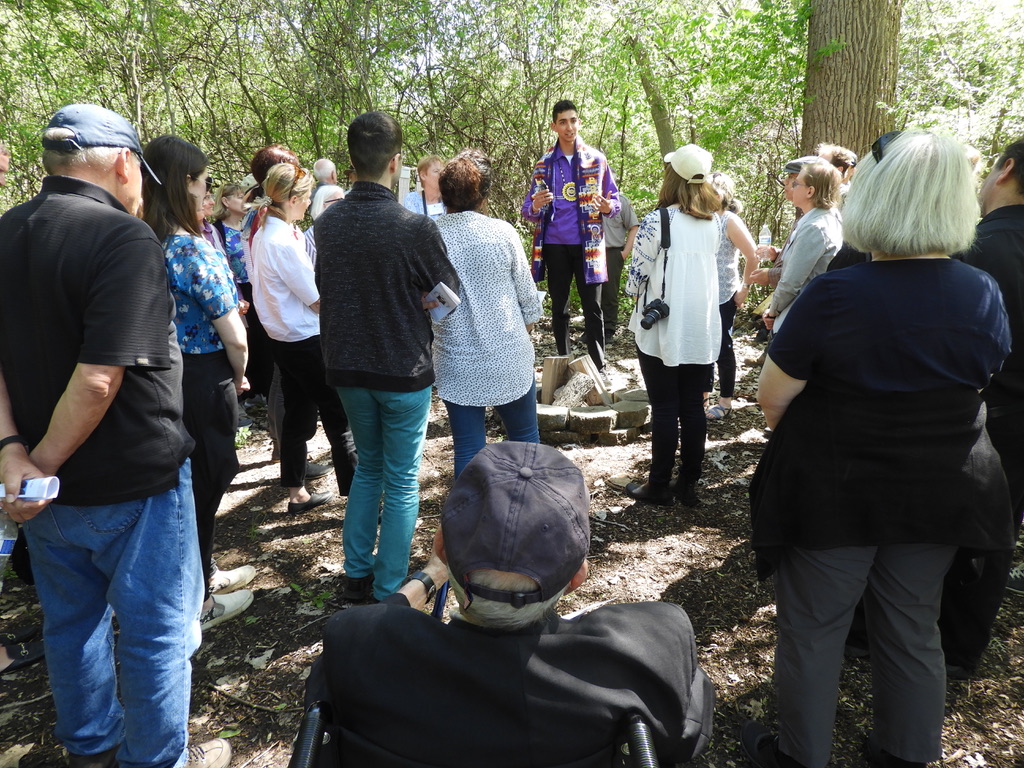
Listening to Josh Garcia
As an added bonus, we even got in a bit of kayak-ing – a first for the AHLP! – on the River Raisin with our guide Dan Harrison.
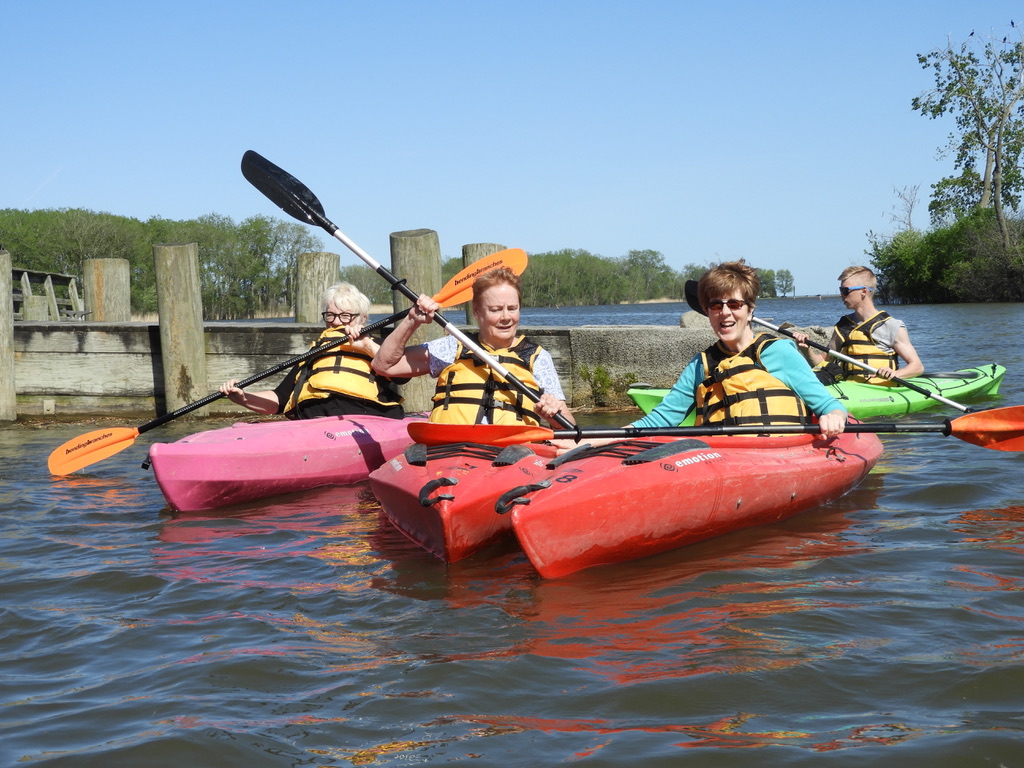
Mary, Helen and Debbie

Dan Harrison on the water
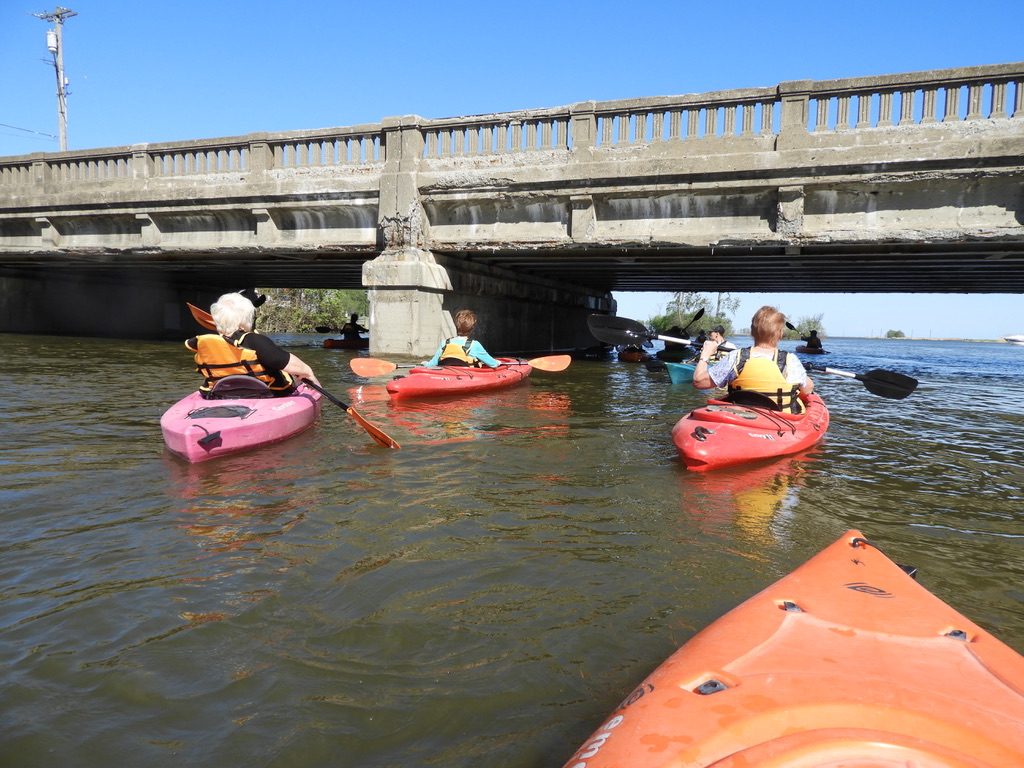
Returning home
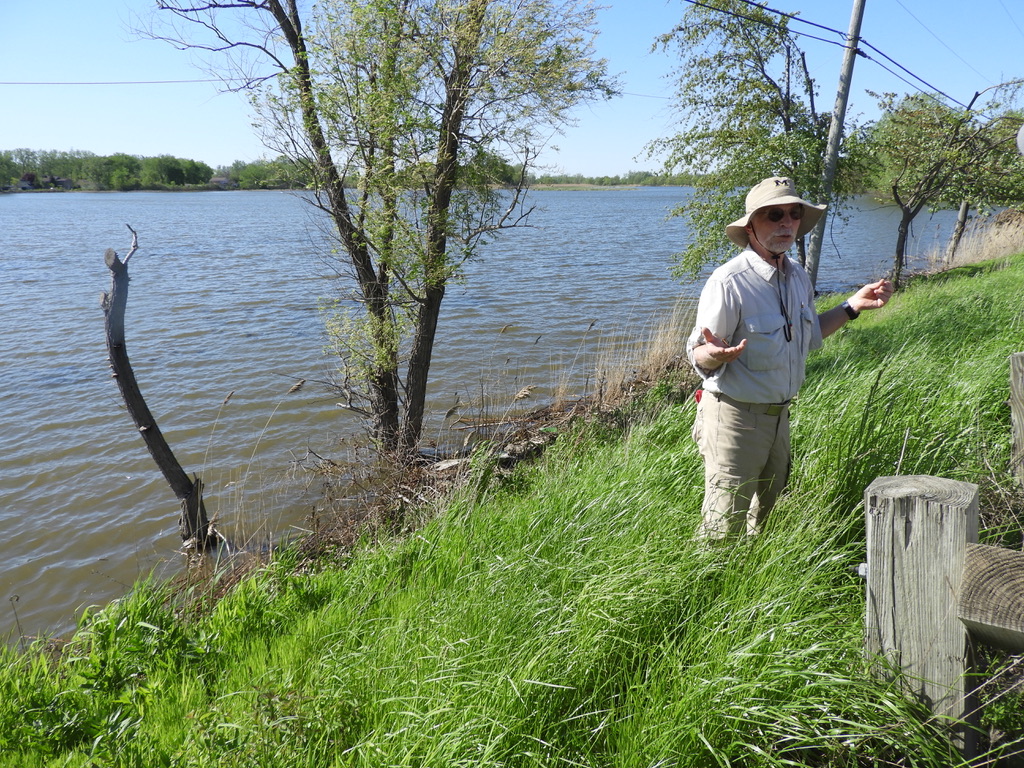
Learning about Hull's Trace
The slate of papers continued on the second day. Dorna Eshrati, our 2019 student scholarship winner, summarized her thesis, "Kansas Pleasure Grounds" and its link with the broader Rural Cemetery Movement. Karl Koto then provided an overview of what has been taking place at Fair Lane and at the Edsel and Eleanor Ford House (new visitor center) and the respective challenges therein. At every turn, was the theme of balancing competing values.
The morning ended with an inspiring account of the upcoming Piet Oudolf 'impressionistic' garden planned for the Olmsted-designed Belle Isle Park. Duncan Campbell recounted as to how "A love letter from Detroit" had become "a love affair with Detroit." This new layering of one visionary of the 'new perennial movement' with that of another visionary, namely Frederick Law Olmsted and his 1883 preliminary plan. [Later that day we would visit Belle Isle, and while constrained in movement due to the Grand Prix slated for the following weekend, we were able to see the Aquarium and the Conservatory.]

Hitsville USA

Our guide Jamon
From the bus, we visited a wide range of places north of Midtown with the compelling commentaries of a community historian and activist, Jamon Jordan. We visited the epicentre of the 1967 rebellion and made our pilgrimage to Hitsville USA and the music story there. We then migrated towards and toured the Ford Piquette Plant and heard about the origins of the automobile.

With the docent
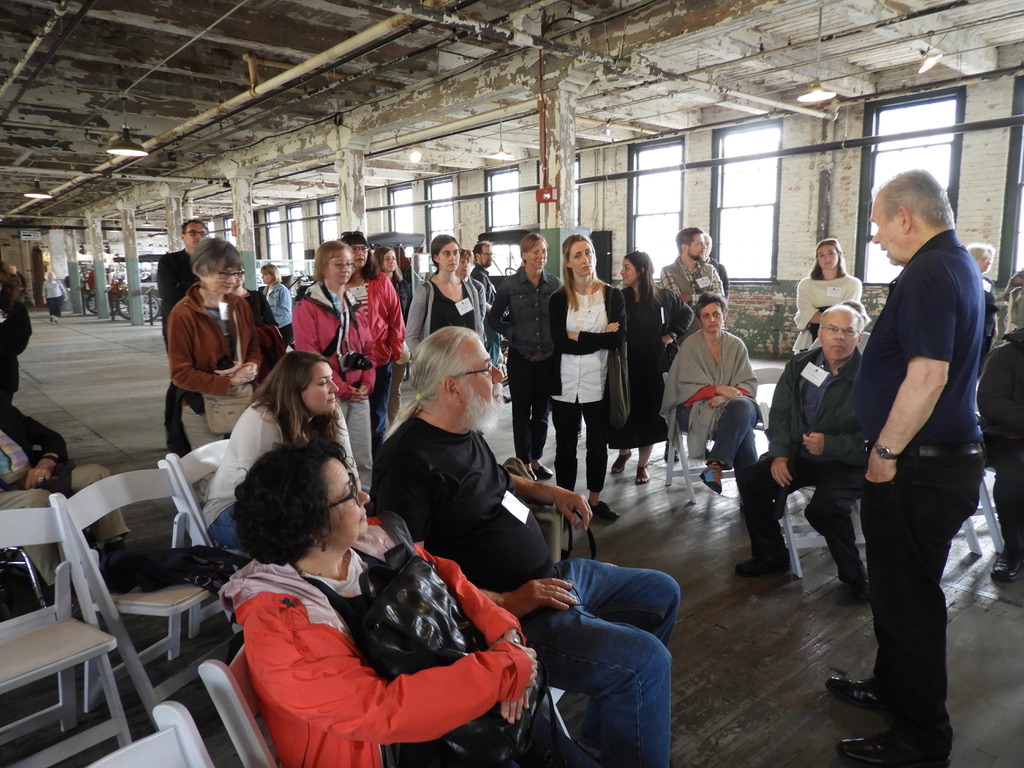
Smitten
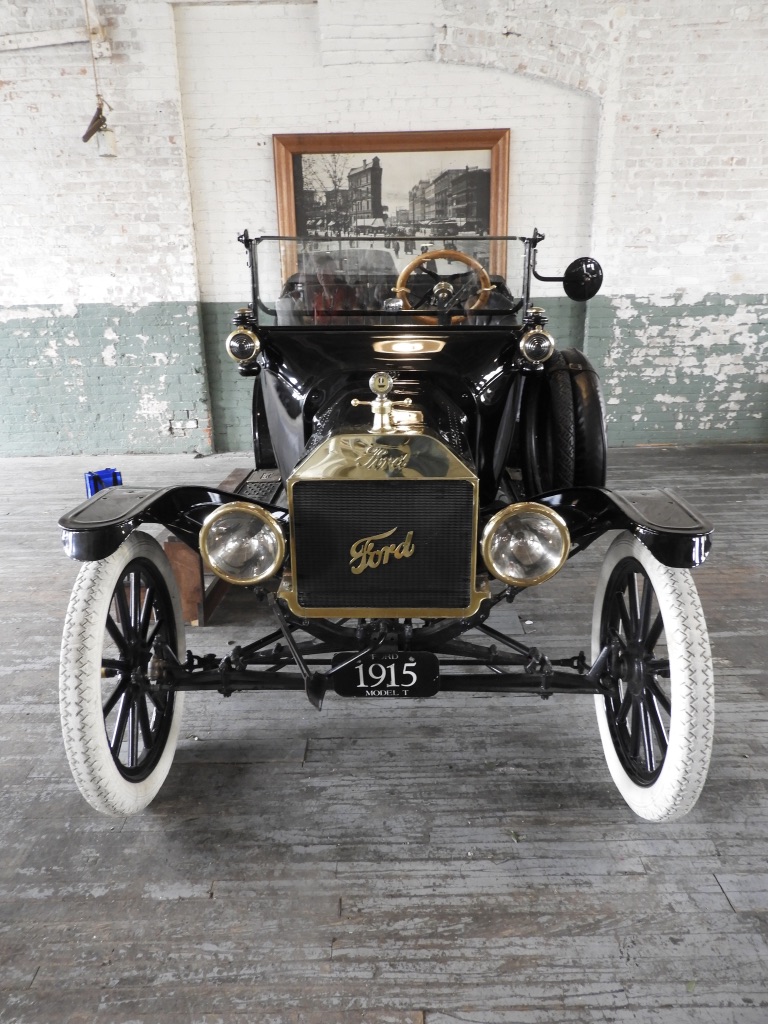
A beauty
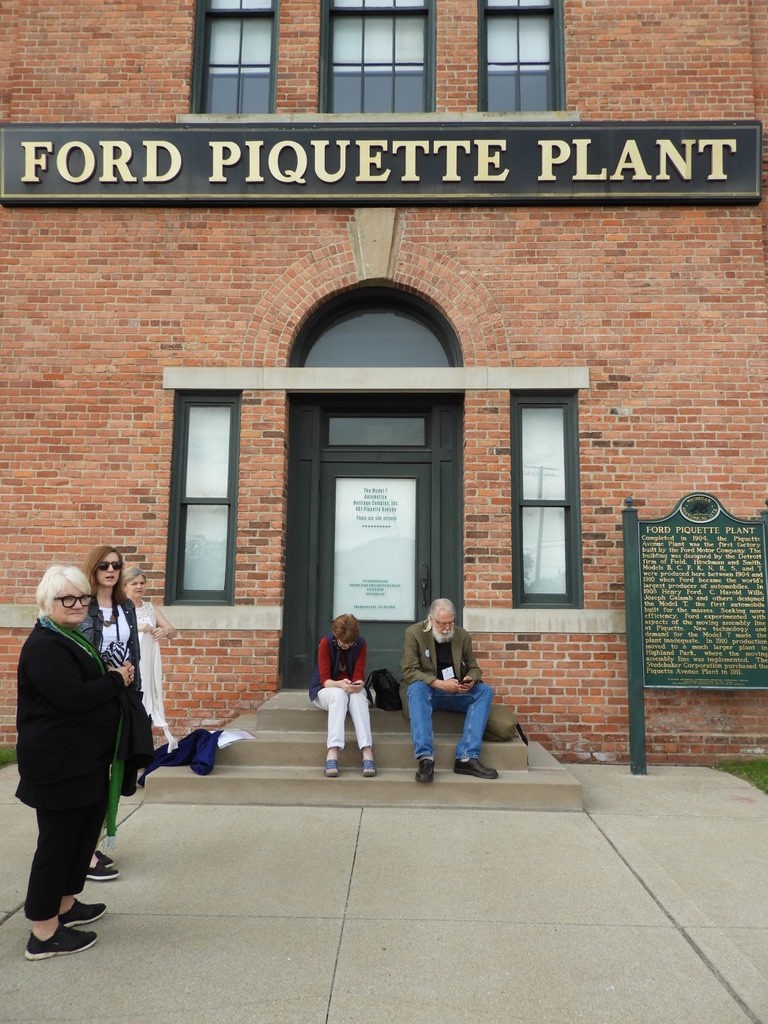
Waiting to go downtown
Our last stop on Friday culminated in a walking tour of Downtown Detroit from Hart Plaza to Campus Martius Park to Grand Circus Park, peeking in at the Guardian Building along the way.

Guardian Building interior

Amazing
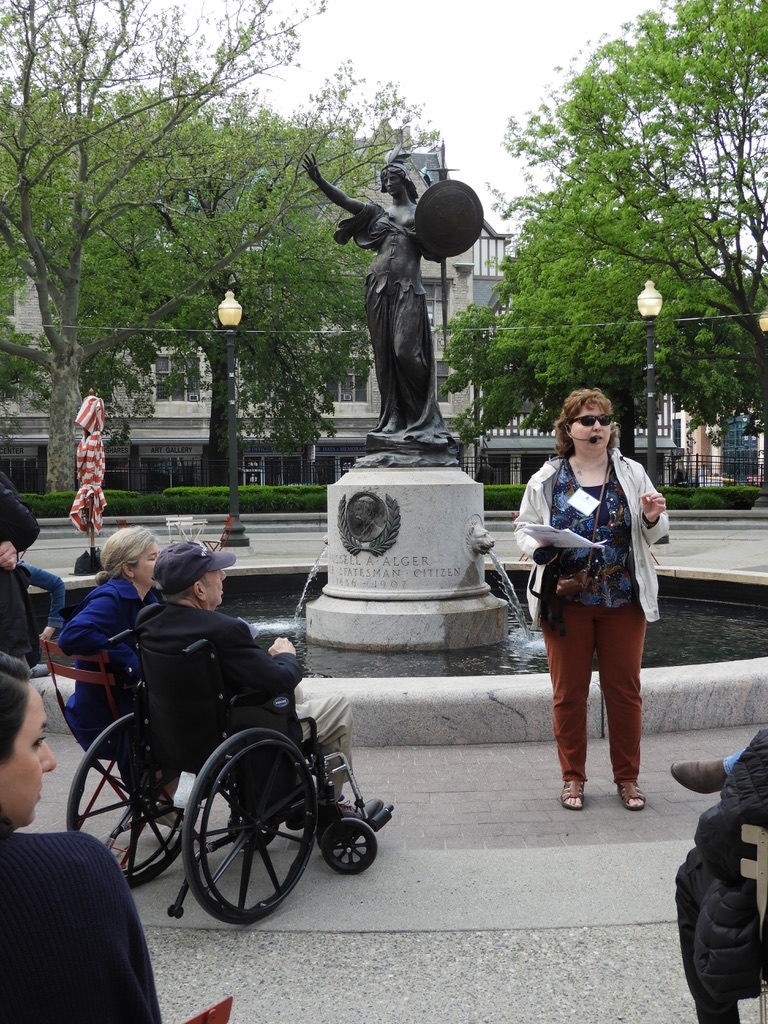
Ruth Mills bringing the stories to life
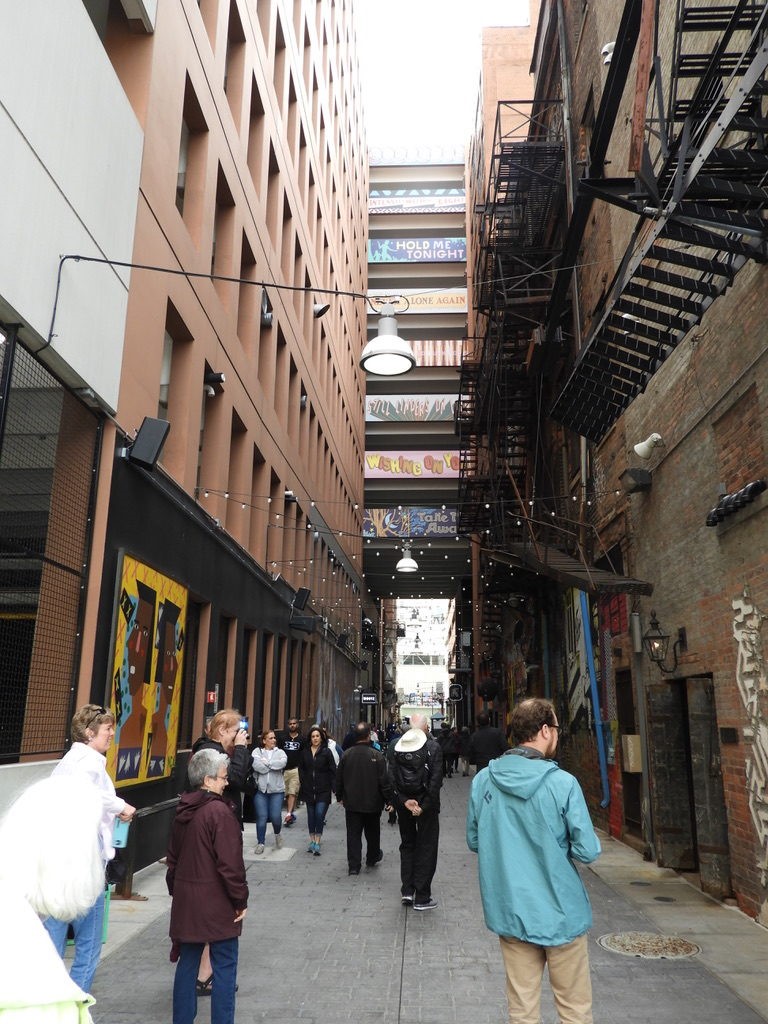
Through the belt

Winding up for the afternoon

Ruth
Friday evening's communal pizza party at home base, sponsored by Mary Tivy, provided a welcome opportunity for sharing stories of past conferences, new members, and current challenges.
Papers continued on the final day of the conference including Detroit's public school garden landscapes and Michael Johnson's overview of the city's public open spaces: "the heart of the city is its downtown, while its soul is embodied in its neighborhoods." Anticipating 2020, Debbie Smith promoted next spring's meeting in Natchitoches, using the 1989 film, Steel Magnolias, (which was filmed there) as both a yardstick and as a carrot.

Dale at the onset of the tour
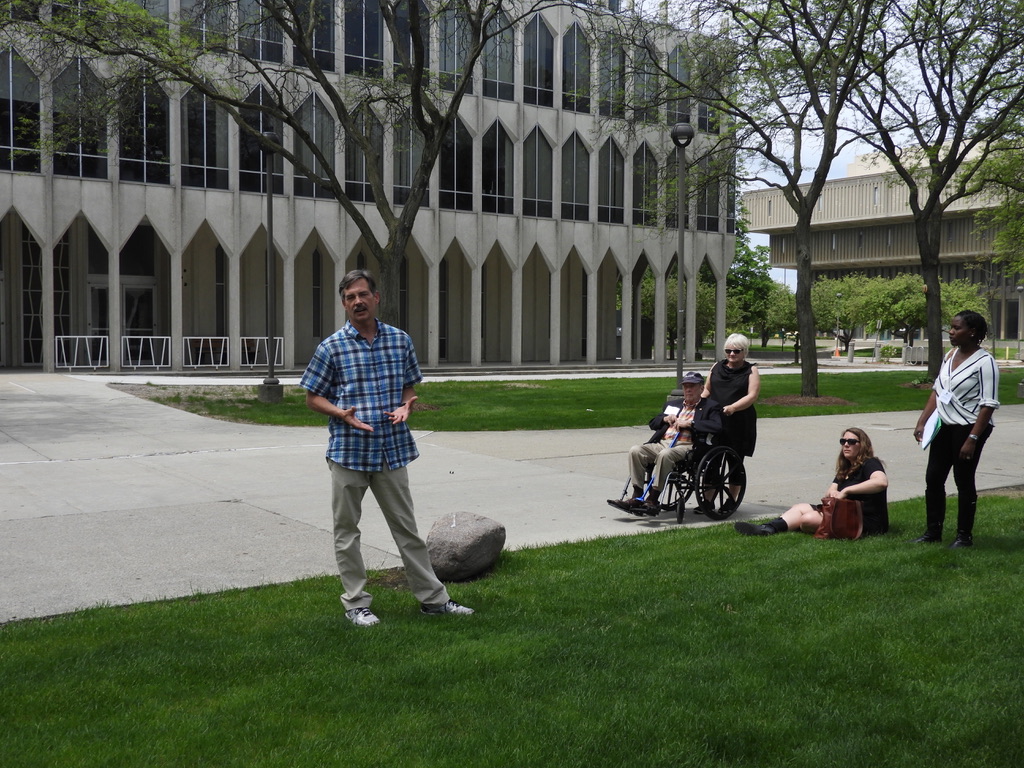
In the midst
The afternoon program was kicked off by Dr. Dale Gyure who spoke to the Yamasaki legacy on the campus of Wayne State University. Wandering, we then heard from Maura Rockcastle and Kemba Braynon who informed us of the competition for the DIA Plaza and Midtown Cultural Connections.
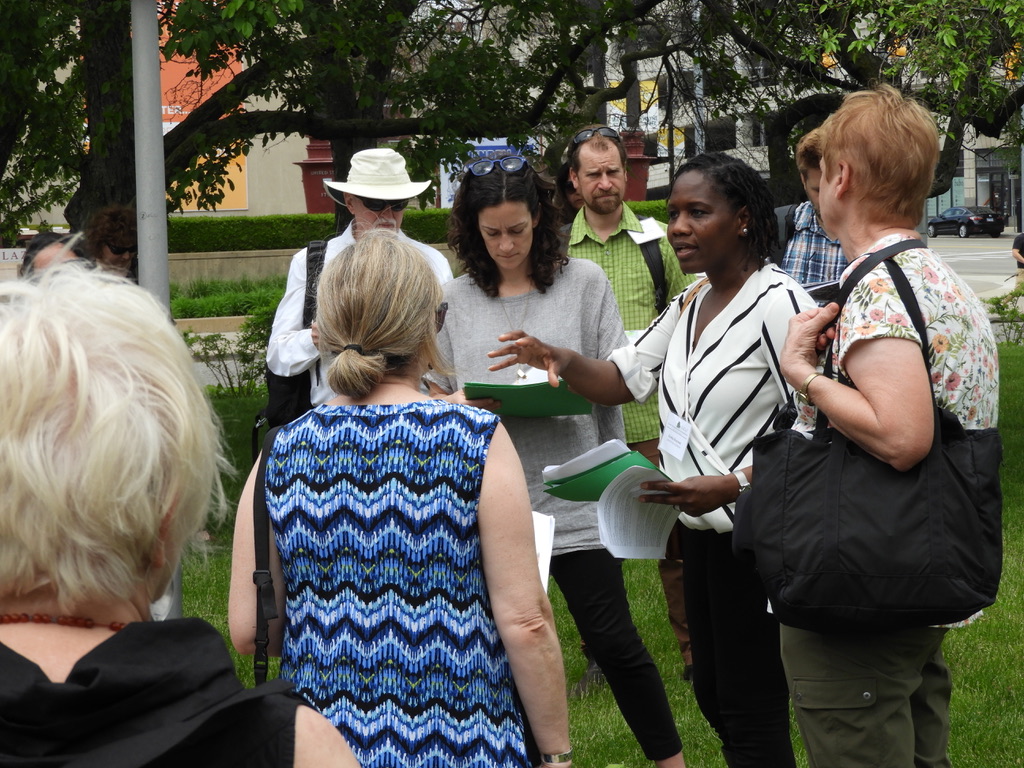
Our competing tour guides
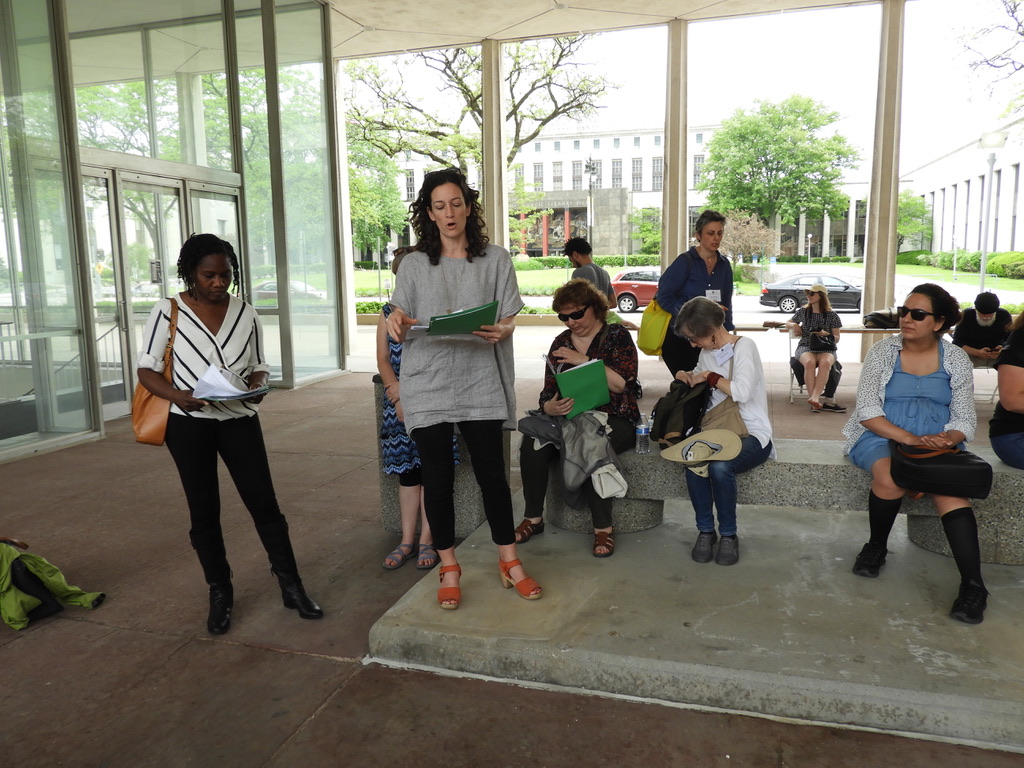
Maura

Kemba

In front of the library
We then had the chance to see firsthand, (Ella) Fitzgerald Park. We then wandered over to the local community center which is called Neighborhood HomeBase.

In (Ella) Fitzgerald Park

Our exhuberant hosts
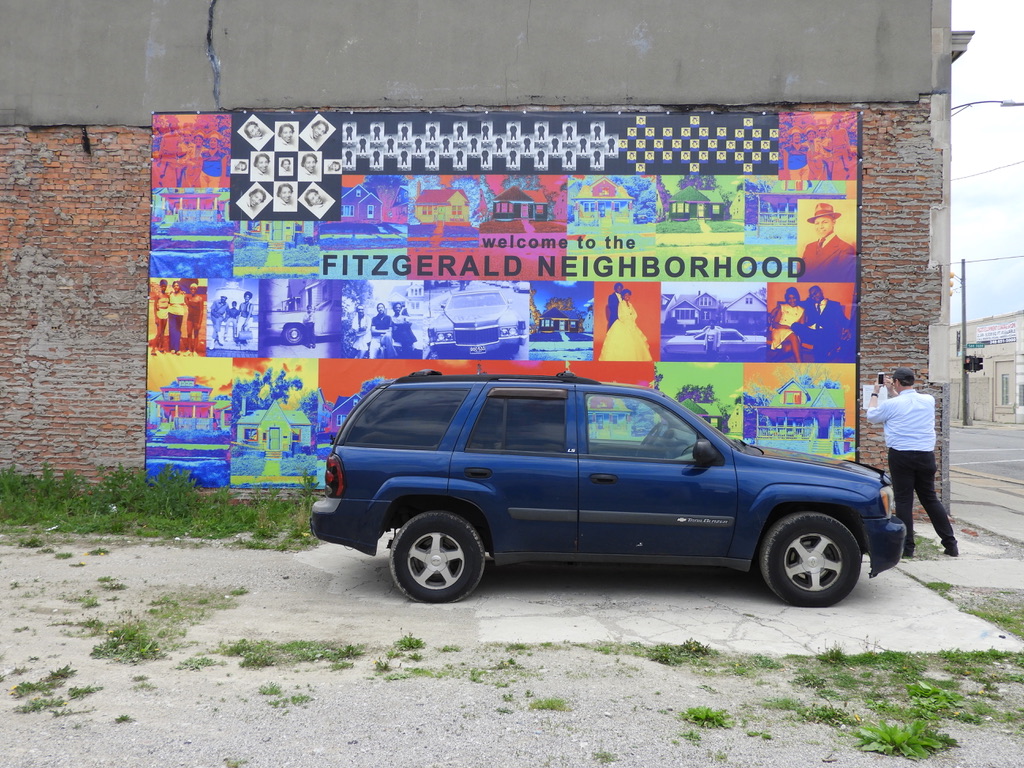
In the hood

In the community centre
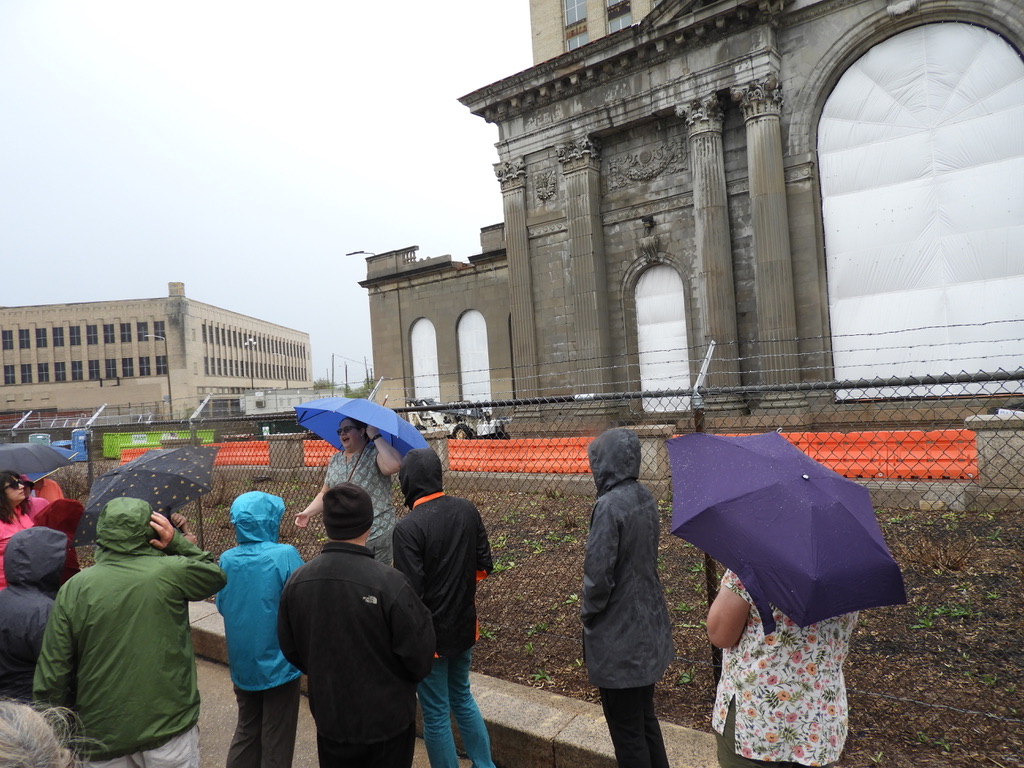
Even the wind won't stop us
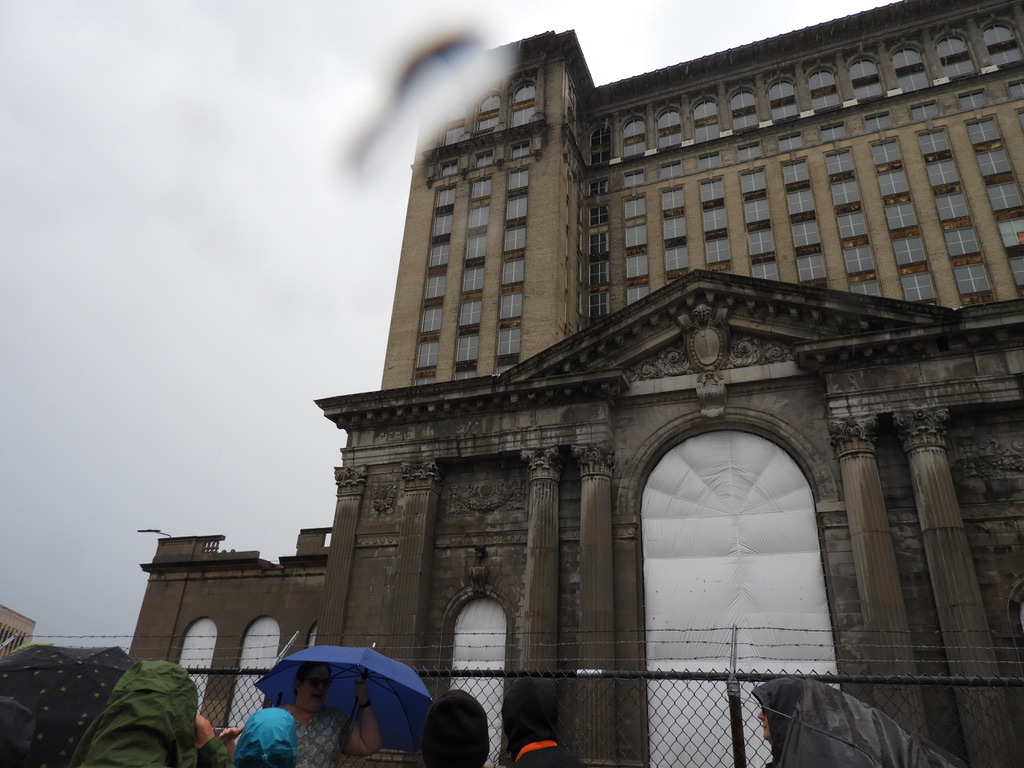
A wet Central Station
Back on the bus, and with wetter (and windier) weather looming, we met Kristen Nyht at Michigan Central Station. Broken umbrellas notwithstanding, we persevered and learned much about the Ford Corktown Campus. Once the nasty weather passed, we completed the afternoon listening to Ruth Mills speak about the collective design work of Ludwig Hilberseimer, Alfred Caldwell and Mies van der Rohe at Lafayette Park, still relevant and nicely matured.
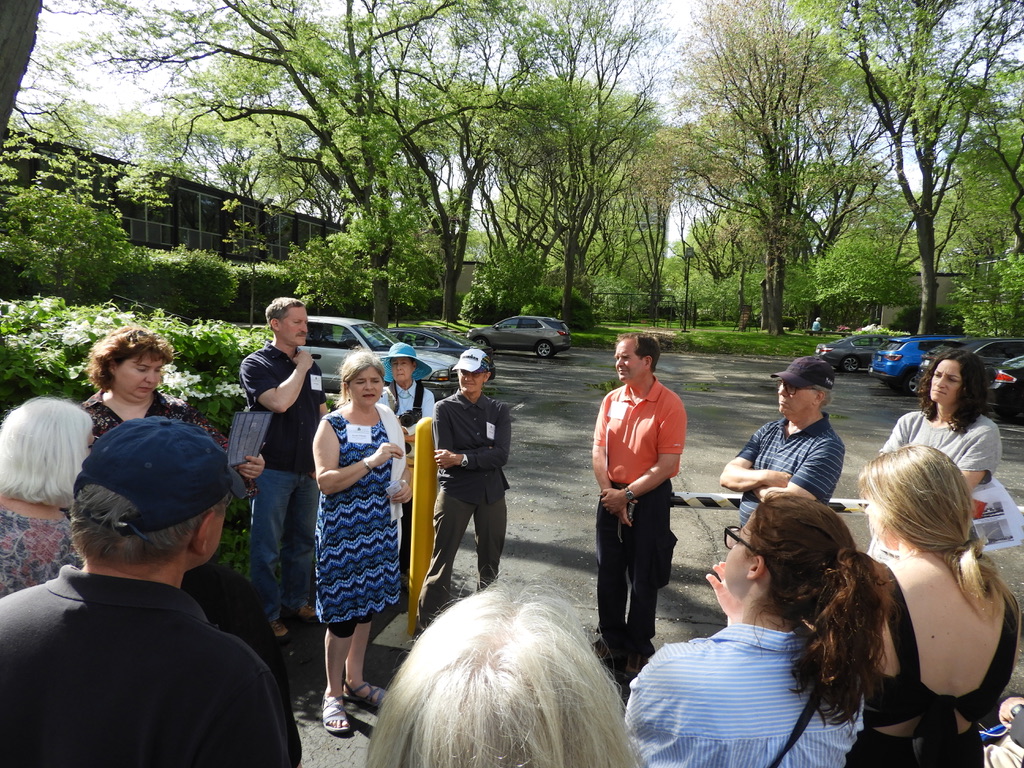
At Lafayette Park

Ruth filling in the blanks
Our closing banquet – rather, beers and 'feather bowling' – took place at the Cadieux Café, a first for all of us! The evening was marked by the final results of the silent auction where we raised over $700. for the student scholarship fund. We were then 'ferried' back to Ferry Street on the Detroit Bus Company. The cost for the ride supported the company's mission to transport underprivileged students.
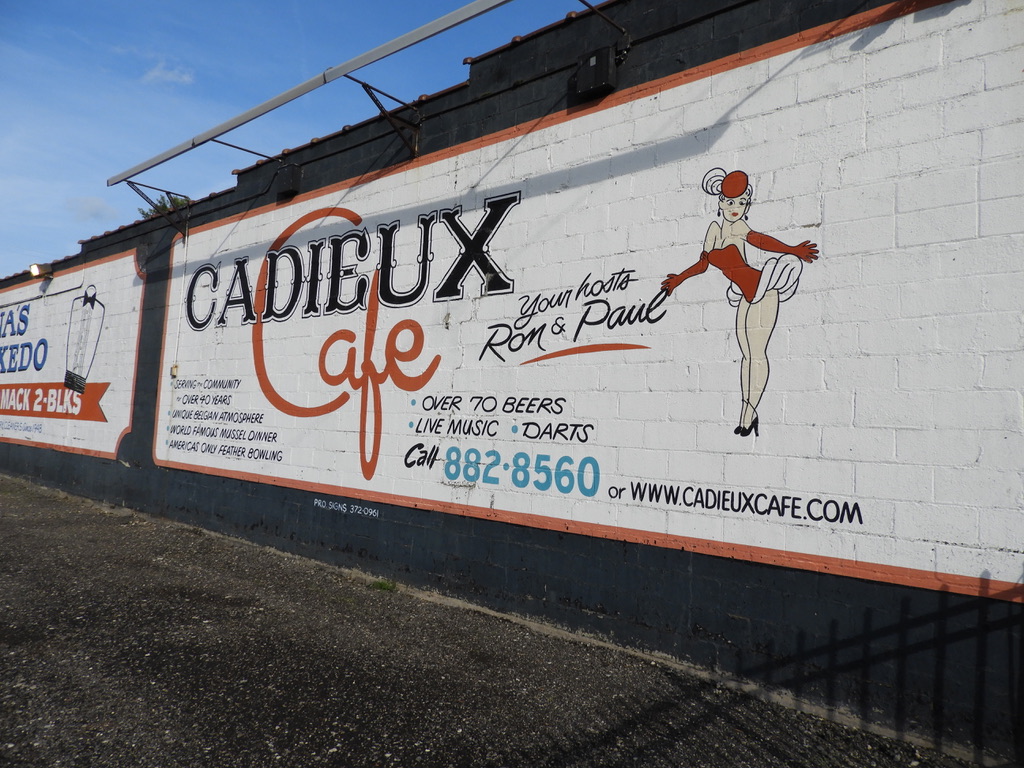
Cadieux Café
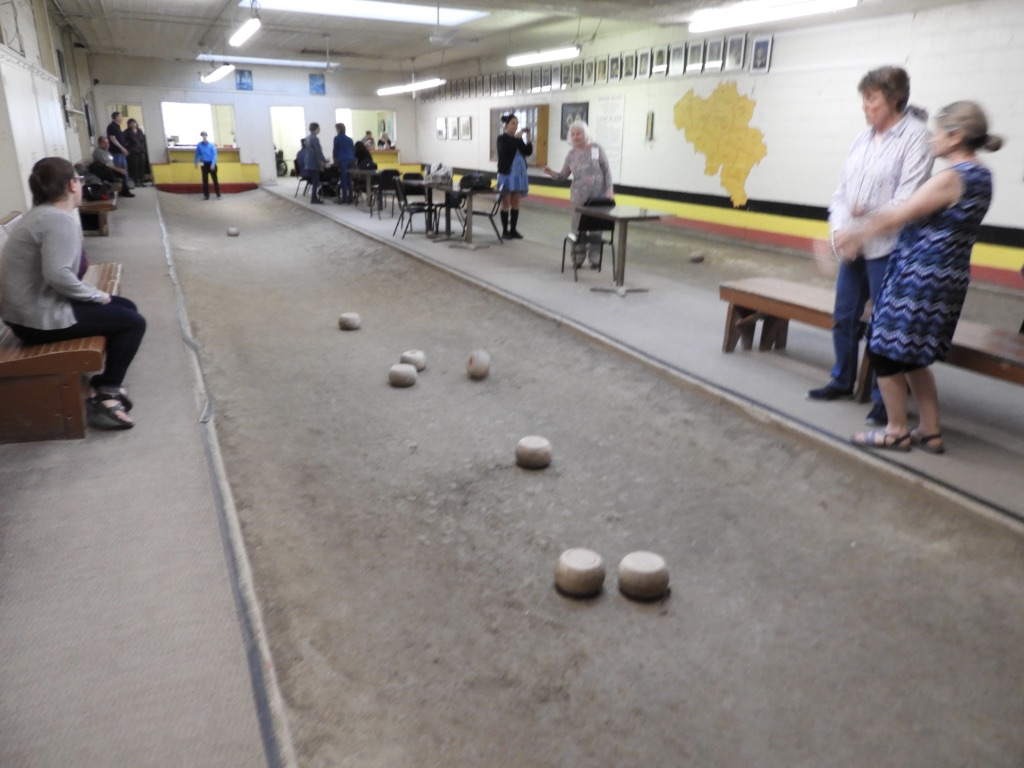
The battleground
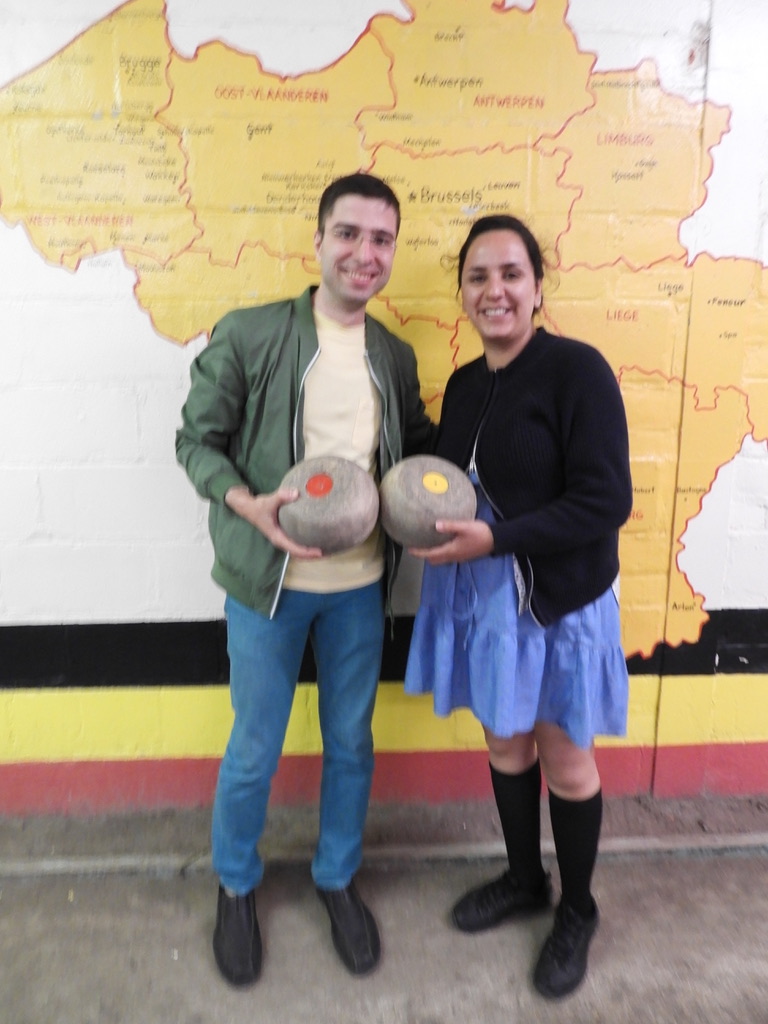
Nazila and Dorna

Ruth and Carrie
Karen Marzonie and Karl Koto were kind enough to spend their Sunday morning giving a 'behind the scenes' tour of Fair Lane to those who were able to extend their AHLP Detroit experience. But, as with all good things, it had to come to an end, and so it was with the 41st installment of the AHLP!
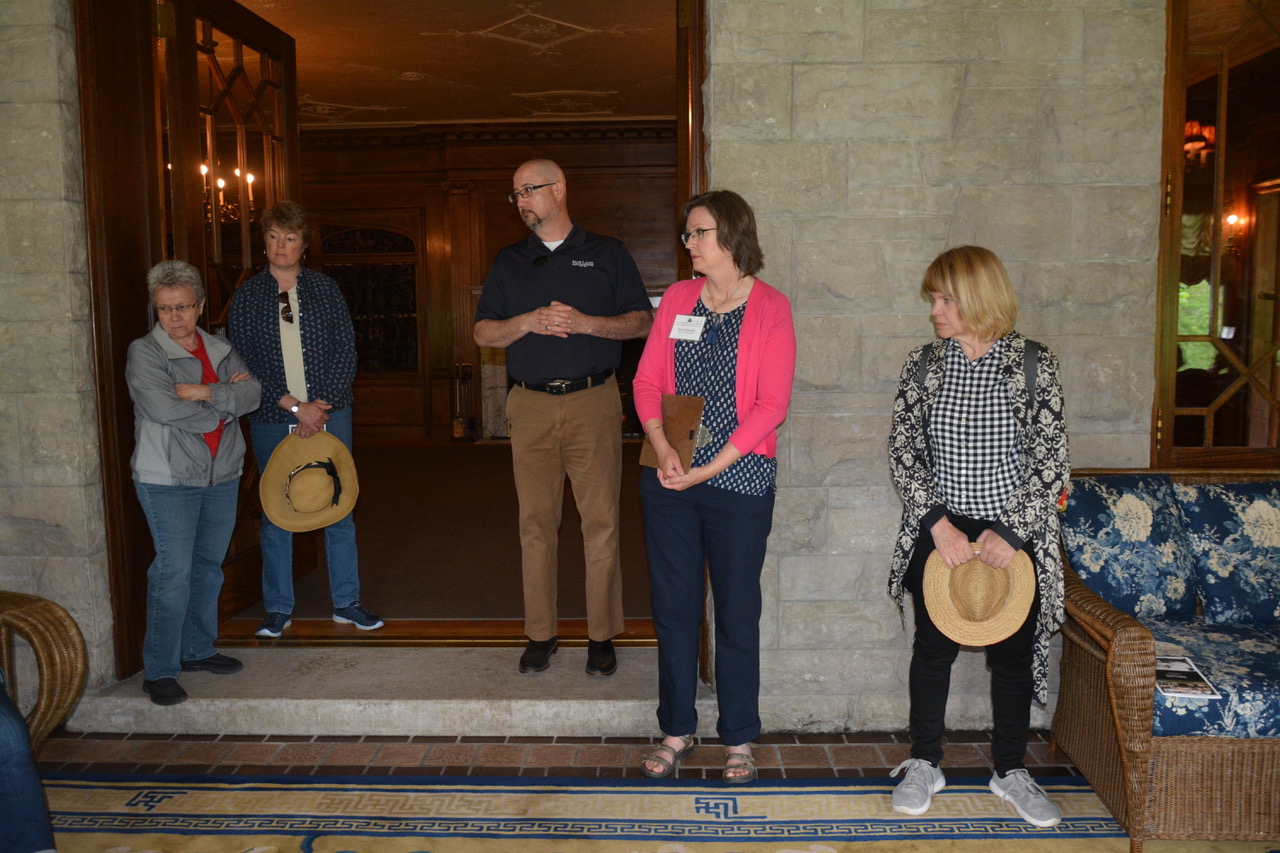
Karl and Karen at Fair Lane
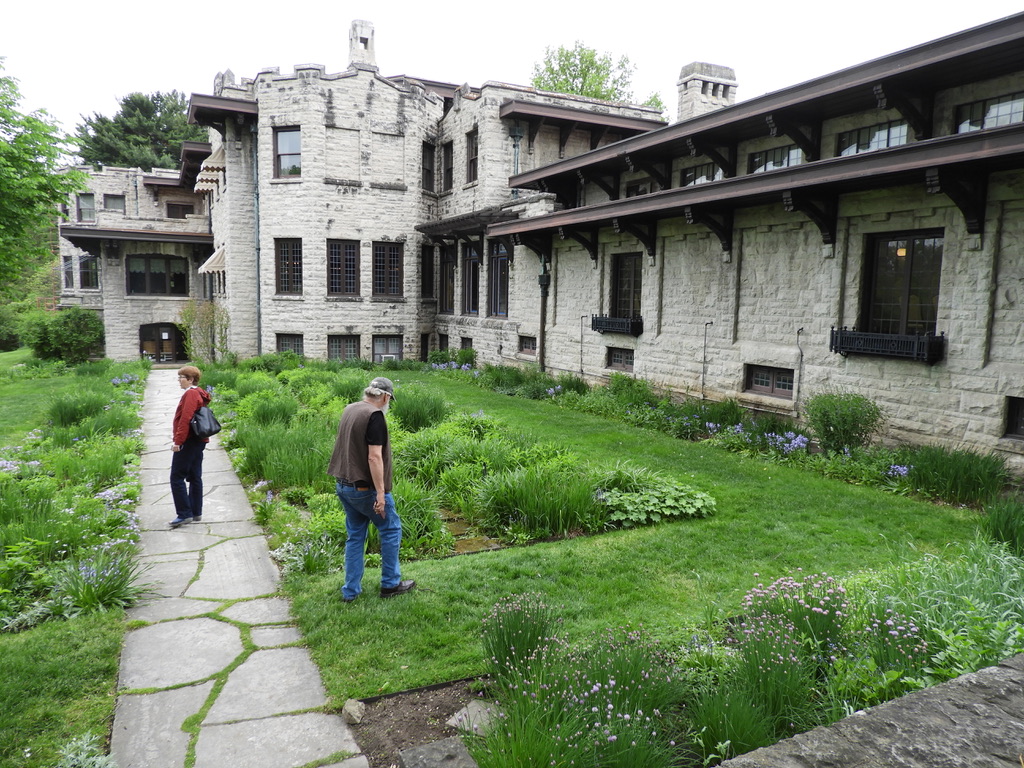
Debbie and David exploring

Karen providing details
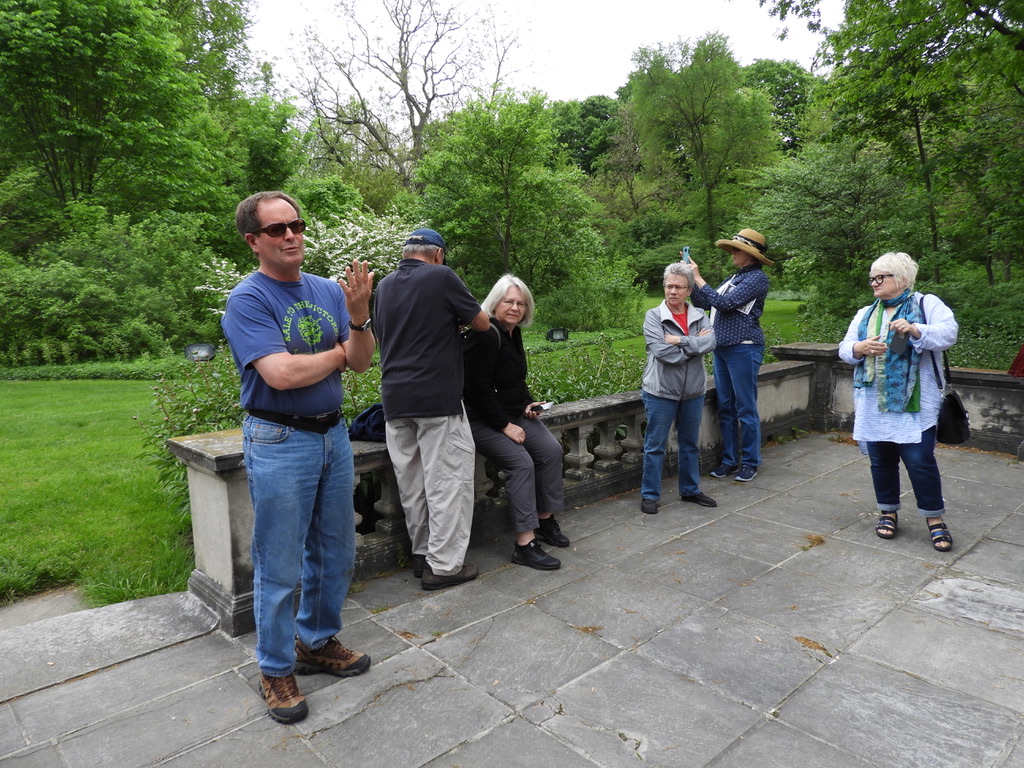
Bob Grese telling Jensen stories
When all is said and done, kudos to the management and staff at the Inn on Ferry Street, who provided wonderful service while we were in their care.
But perhaps finally, and most importantly, a huge show of appreciation to Brenda Williams for suggesting this in the first place and her people at Quinn Evans in Michigan for making it happen.
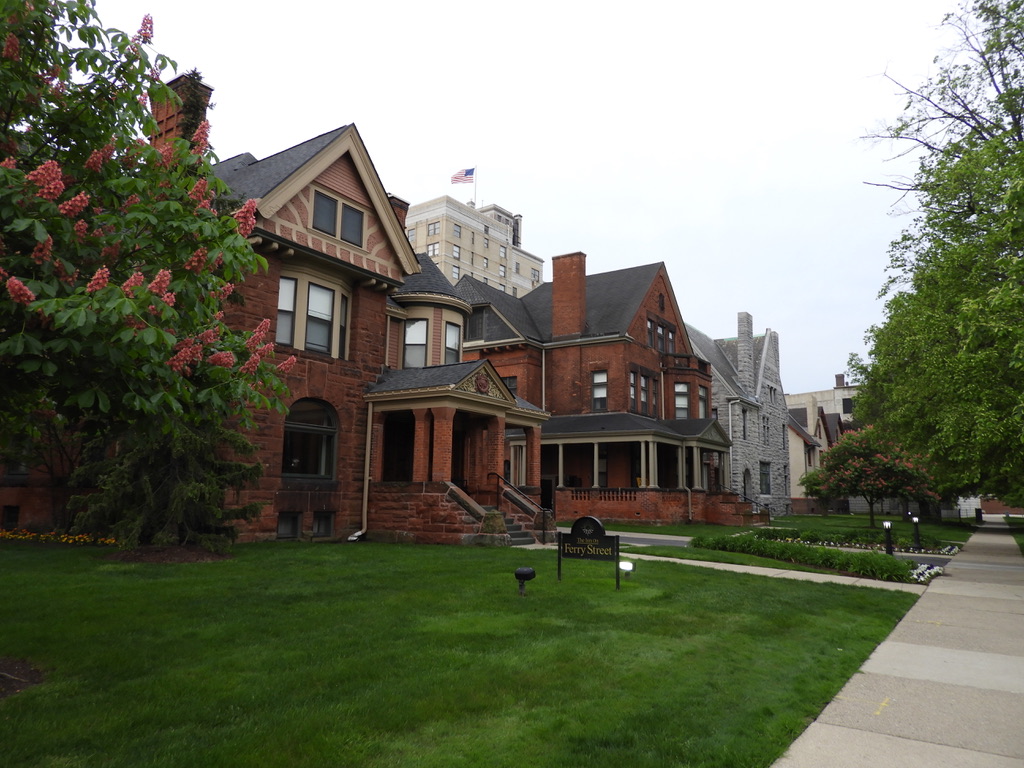
The Inn on Ferry Street

We are smitten